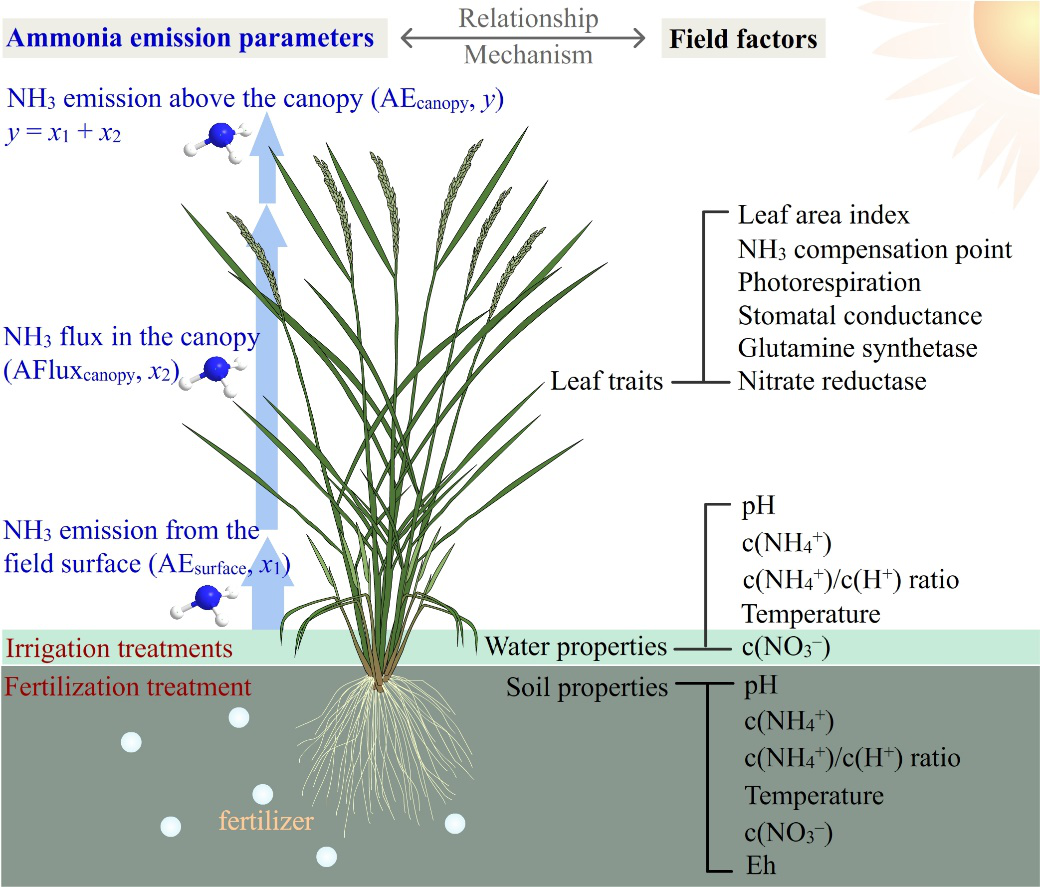
Scientists analyzed a two-year field experiment and revealed that the combination of deep flooding and slow-release urea can reduce ammonia emission from rice fields.
This study was conducted by WU Yuejin’s team in Institute of Technical Biology and Agriculture Engineering, Hefei Institutes of Physical Science.
Globally, an average of 18% of applied nitrogen (N) fertilizers are lost via NH3 emission. It is important to reduce NH3 emissions to achieve cleaner rice production. Currently, little is known about the combined effects of irrigation and fertilization on NH3 emission from rice fields. Specially, the contributions of different field factors to NH3 emission and the role of the rice canopy in NH3 emission are not fully understood.
To solve this problem, WU’s team completed the analyses of a two-year field experiment (2017 and 2018), which was performed consisting of nine treatments: the full combination of three irrigation treatments (deep flooding (DF), moderate flooding (MF), and shallow flooding (SF)) and three fertilization treatments (the control test (N0), urea (U), and slow-release urea (SU)).
The results indicated that N application significantly increased NH3 emission from rice fields (p < 0.05). The best practice for reducing NH3 emission was the combination of DF and SU. Surface water pH, c(NH4+), and the c(NH4+)/c(H+) ratio should be controlled at low levels to reduce NH3 emission. Ammonia emission under DF and SU decreased, largely because of the lower c(NH4+), pH, and c(NH4+)/c(H+ ) ratio in the surface water.
According to the role of the rice canopy in NH3 emission, the rice growing season can be divided into four periods. When considering the whole rice growing season, the rice canopy was a NH3 sink. Ammonia flux in the canopy (AFluxcanopy) was low and contributed little to NH3 emission above the canopy (AEcanopy); however, it may be used as an indicator to assess rice yield potentials.
The combination of DF and SU led to lower NH3 emission and higher grain yield, water productivity, and N recovery efficiency; hence, this could be a promising practice for the efficient and cleaner production of rice.
The work was supported by the National Key R&D Program of China, the National Natural Science Foundation of China, the Science and Technology Service Network Initiative of Chinese Academy of Sciences, and the Key Scientific Program of Anhui Province.

Parameters and issues analyzed in the current study. (Image by YANG Yang)

Proposed mechanistic map illustrating the reduced NH3 emission from rice fields under deep flooding and slow-release urea treatment. (Image by YANG Yang)

86-10-68597521 (day)
86-10-68597289 (night)

52 Sanlihe Rd., Xicheng District,
Beijing, China (100864)

